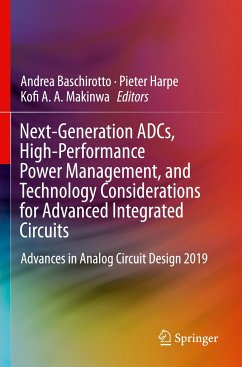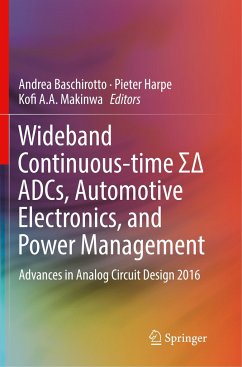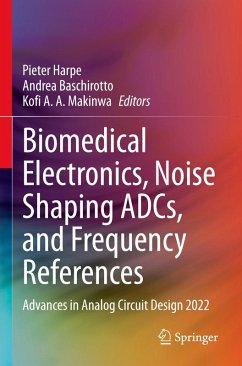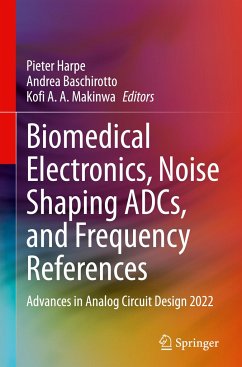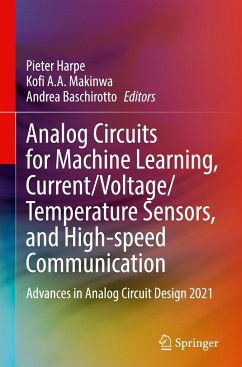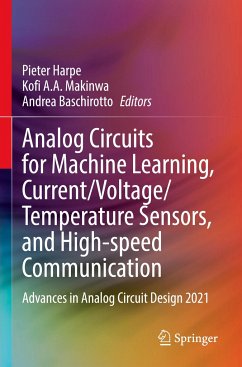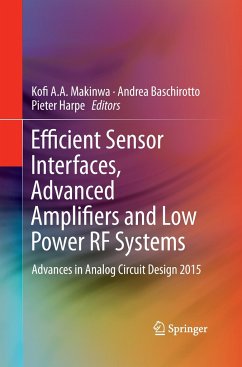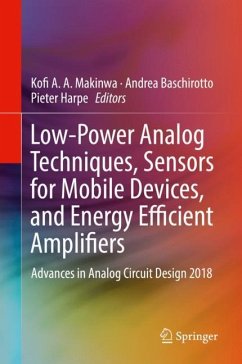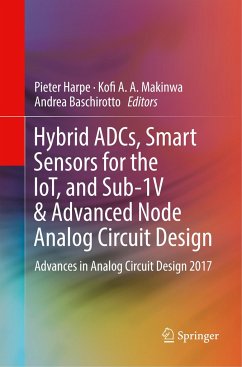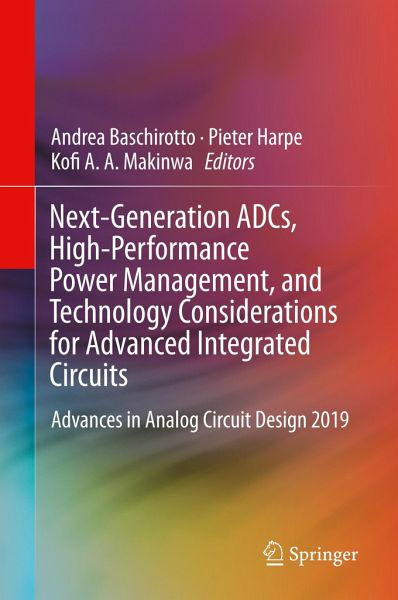
Next-Generation ADCs, High-Performance Power Management, and Technology Considerations for Advanced Integrated Circuits
Advances in Analog Circuit Design 2019
Herausgegeben: Baschirotto, Andrea; Harpe, Pieter; Makinwa, Kofi A. A.

PAYBACK Punkte
46 °P sammeln!
This book is based on the 18 tutorials presented during the 28th workshop on Advances in Analog Circuit Design. Expert designers present readers with information about a variety of topics at the frontier of analog circuit design, including next-generation analog-to-digital converters , high-performance power management systems and technology considerations for advanced IC design. For anyone involved in analog circuit research and development, this book will be a valuable summary of the state-of-the-art in these areas.Provides a summary of the state-of-the-art in analog circuit design, written ...
This book is based on the 18 tutorials presented during the 28th workshop on Advances in Analog Circuit Design. Expert designers present readers with information about a variety of topics at the frontier of analog circuit design, including next-generation analog-to-digital converters , high-performance power management systems and technology considerations for advanced IC design. For anyone involved in analog circuit research and development, this book will be a valuable summary of the state-of-the-art in these areas.
Provides a summary of the state-of-the-art in analog circuit design, written by experts from industry and academia;Presents material in a tutorial-based format;Includes coverage of next-generation analog-to-digital converters, high-performance power management systems, and technology considerations for advanced IC design.
Provides a summary of the state-of-the-art in analog circuit design, written by experts from industry and academia;Presents material in a tutorial-based format;Includes coverage of next-generation analog-to-digital converters, high-performance power management systems, and technology considerations for advanced IC design.





